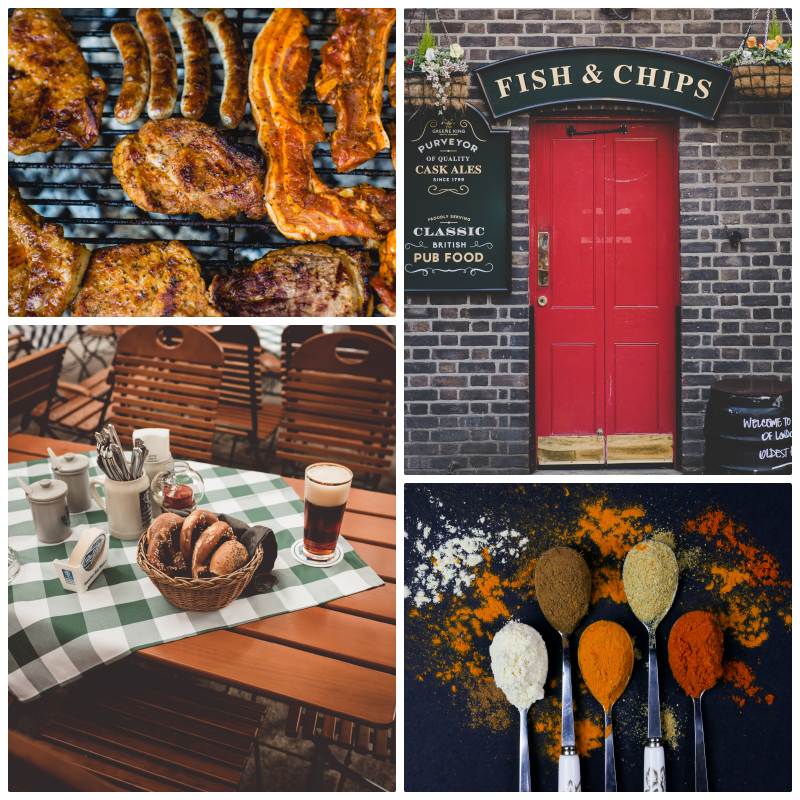Ain't No Party Like a Grillparty
There are certain things that surprise people when they first arrive in Germany: eating cheese with onions for breakfast, putting cola in beer, and the continued success of warbling songstress Helene Fischer are just a few. In addition to these curiosities, we can add the overwhelming popularity of barbecues. It seems obvious once you think about it, the national food is Wurst after all, but when people think of lighting up the BBQ, they’re rarely thinking about what Germans can bring to the party. Much of what the Germans have to offer in this area extends past the national food to a range of different dishes, from bacon on a stick to potato salad.
What won’t come as a surprise is the seriousness with which Germans approach their barbecues. Where the British tend to improvise, the Germans prefer to prepare meticulously. Type “Grillkurse” into Google and the results speak for themselves. Every form of grilling technique is available to learn, from the basics of cooking a Wurst to the complexities of the Dutch Oven, the latter being a type of cooking pot rather than a terrifying sexual act. Of course, this being Germany, the classes themselves have to come with elaborate titles such as “Die Kunst des Holzkohlegrillens” (The art of charcoal grilling) and Kulinarische Weltreise (Culinary World Tour) plus many more that are available to those who wish to hone their skills and perhaps one day be rewarded with the title “Grillmeister”. Despite the German grill having long been the preserve of men, nowadays there are courses designated as “Ladies Only”, which goes to show how truly progressive modern German grilling has become. Women may not earn the same as their male counterparts, but damn it, they can pay to be patronised by a man with a large spatula and an in-depth knowledge of rotisserie chickens.
Once the dark arts of the grill have been learned, Germans can go forth and cook all the beasts of the land and fish of the sea… almost. There are some strong opinions on what should and shouldn’t be cooked on a barbecue. For instance, marinated meat, certain seafood, and cured sausages are considered verboten, while foil trays are frowned upon. Though opinions will fly, as a child of 1980s Britain, I’m ill equipped to offer any useful input. The British spend most of the summer months trying to avoid accidentally giving each other horrific bouts of food poisoning. All my experiences of British barbecues taught me was that chicken legs will most definitely kill you, unless the insides are twice as hot as the surface of the sun, and Birds Eye frozen beef burgers will shrivel to the size of a 2p piece when cooked, which denotes that they are ready to eat. You can imagine the looks of horror when I offer up these nuggets of gold to German friends, as they stand over the hot coals.
Thankfully, Germans don’t really need any help - once they’ve done a grill course, they’re more than capable of cooking up a storm - all that’s left is to decide on what to actually cook. Wurst is the obvious king of the German Grillparty, with every region having their own particular variant. Bratwurst is a popular choice, but in all honesty, any Wurst (barring those deadly cured sausages) can be cooked on a grill. My personal favourite is the Käsewurst or Käsekrainer, which originally come from Austria but are a staple of a good barbecue here as well. Essentially it is like a premium hot-dog with cheese packed into the middle. It might sound like an unholy abomination, but it’s actually very tasty, as long as you avoid burning your face with the napalm-level cheese that tends to drip out the sides.
Along with Wurst there’s Grillfackeln, which is a stick with bacon wrapped around it. Despite loving them, I’ve had a difficult relationship with these ever since my first barbecue in Germany. Back in 2008, I was invited to meet my then girlfriend's parents for the first time, and to celebrate the occasion they hosted a Grillparty for all the family. Terrified of making a fool of myself, and worried that I might seem impolite, my instinctive British manners kicked in and I continued to accept the various foods offered to me, well past the point of my stomach’s ability to digest the elaborate cornucopia of meat swishing around my intestines. Among the number of delicious things on offer were the Grillfackeln. I cannot remember exactly how many I ate, but to this day, every time I see one at a barbecue, I have involuntary meat sweats.
Wurst, a variety of steaks, and bacon on a stick are common, but Germans also pride themselves on producing a range of amazing salads. Visitors should obviously expect to come across potato salad made to regional standards. Germans will happily debate what makes a good Kartoffelsalat, making the introduction of one useful, if only to get people talking. Germans will argue over how much vinegar should be mixed in, the general consistency, and whether boiled eggs have any place. You should also expect to find a Nudelsalat. Every family has their own way of doing things, but all will contain the secret ingredient of Miracle Whip. For the uninitiated, this is an alternative to mayonnaise, originally an American condiment; it has become an important part of the German diet since the 1970s. To remain as on-brand as possible, Nudelsalat also contains meat, usually ham or chopped Wurst. It might sound a little strange, but I have grown to love Nudelsalat with a burning intensity that I usually reserve for Newcastle United or Star Wars movies.
The earnestness with which Germans approach grilling might be alien to the ‘make it up as you go along’ culture of the UK, but it’s this seriousness that seems to be the key to making a great German BBQ - that and a plethora of foodstuffs. The food poisoning Russian roulette of the British barbecue may keep things interesting, but I can’t say I really miss the Botulism jeopardy that accompanies any invite to a British garden party. Grill parties are the highlight of a German summer, and although they may not have the credibility of Texas or Kansas-City BBQ, they’re one of the greatest aspects of living here.
Proofreader: @ScandiTina
Image Credit
Photo by Paul Hermann on Unsplash
Photo by Danny Gallegos on Unsplash
Photo by Markus Spiske on Unsplash
Photo by Vincent Keiman on Unsplash
Photo by Dina on Unsplash
Photo by Iulia Buta on Unsplash







